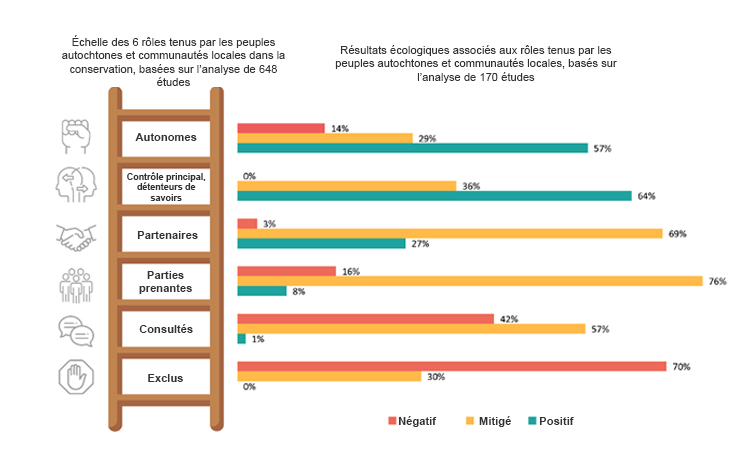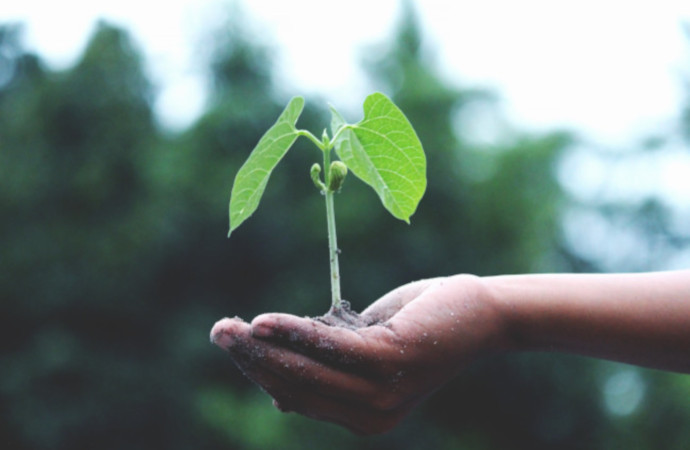To address this knowledge gap, a group of international researchers, including several members of the Commission on Environmental, Economic and Social Policy of the International Union for Conservation of Nature (IUCN), have been working together for several years within the FRB’s Cesab (Center for the Synthesis and Analysis of Biodiversity). In May 2024, they published a major study in One Earth, drawing on nearly 650 scientific articles. They provide a better understanding of what works best, for humans and for nature, and call for a profound change in favour of social justice and equitable governance.
By examining 648 studies, the team first identified six ways in which Indigenous Peoples and local communities are involved in conservation and ranked them on a scale, from exclusion to partnership to autonomy. They then looked at the 170 studies highlighting the links between those six roles and the success or failure of projects (see figure below). The results are clear:
When Indigenous Peoples and local communities are excluded or involved only as participants or stakeholders, they may find themselves unable to influence decisions of great importance to their daily lives, may have their rights violated, or be denied access to lands of cultural importance, etc. In those cases, the big majority of ecological results are sub-optimal or even counter-productive.
In contrast, as one moves up the ladder and equal partnerships are established with conservation authorities, with greater control and cultural recognition for the communities, ecological success goes hand in hand with this recognition. Communities can experience respect for their values, rights, identity and culture, empowerment, cooperation and trust, all of which enable them to connect with and be stewards of nature and the land, while improving their quality of life, both individually and collectively.

Figure : The role of Indigenous Peoples and local communities in conservation projects and associated ecological results.
According to the authors, empowering Indigenous Peoples and local communities as partners and leaders is now essential for fair and effective conservation in order to achieve the objectives of the Global Biodiversity Framework. Although transforming the strategic approaches, design, capacities, processes and interactions, financing and implementation of conservation processes will take time, they highlight various existing and interesting initiatives, such as the growing inclusion of territories and areas conserved by Indigenous Peoples and local communities (ICCAs), also known as territories of life.
<<
A collaborative effort based on rights and justice is needed to achieve a transformative change. This applies to all initiatives to conserve species and habitats, including the emerging wave of initiatives aiming to achieve the 30% by 2030 conservation target, and to restore the world’s degraded landscapes.
>>
